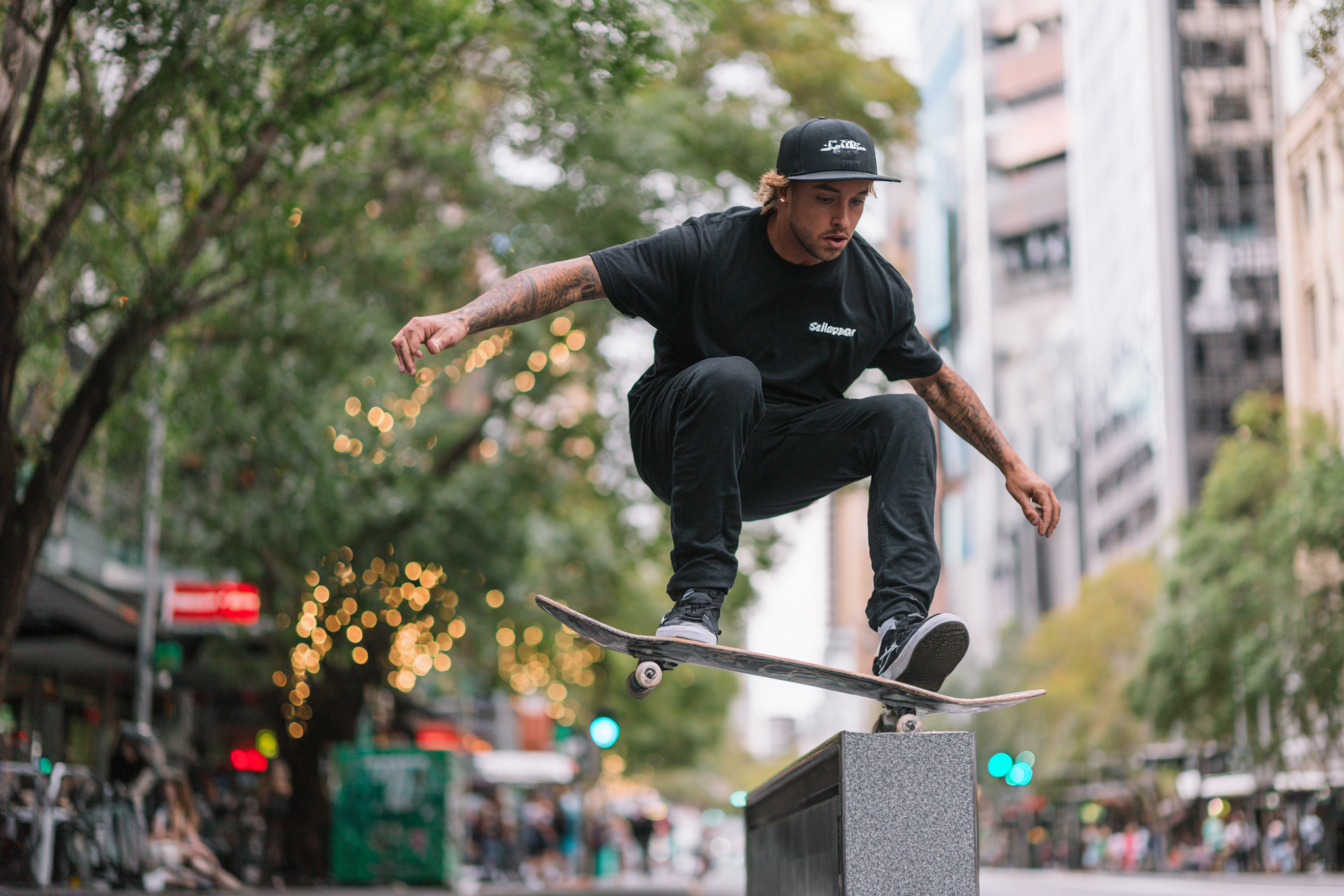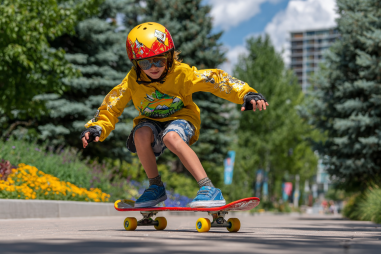Balance is a cornerstone skill in skateboarding that can make the difference between nailing a trick and wiping out. Whether you’re just starting out or looking to push your skills to the next level, mastering your balance will improve your control, boost your confidence, and minimize those dreaded falls. In this article, we’ll explore why balance is so essential in skateboarding, the challenges riders often face, and the best training methods to help you stay steady on your board. With the right tools, exercises, and mindset, you can enhance your stability and skate like a pro.
Why Balance Is Essential for Skateboarding
Skateboarding is a dynamic sport that requires constant adjustments to your body position to stay upright on a moving board. Good balance allows you to maintain control during tricks, rides, and maneuvers, helping you respond quickly to uneven surfaces, obstacles, or changes in speed. Without strong balance skills, your chances of falling or losing control increase significantly.
Balance not only influences your safety but also impacts your ability to progress. Mastery of balance means you can confidently try more advanced tricks, ride at higher speeds, and increase your overall enjoyment of skateboarding. Developing balance builds muscle memory and coordination, which are critical for fluid, precise movements on your board.
Overview of Skateboarding Balance Challenges
Skateboarders face unique balance challenges because the board is constantly moving on wheels and reacting to unpredictable terrain. Some common hurdles include:
- Shifting weight: You must constantly redistribute your body weight to keep the board stable while accelerating, turning, or landing tricks.
- Surface variability: Rough pavement, cracks, and slopes require quick adaptations to maintain balance.
- Maintaining stability during tricks: Tricks like ollies, manuals, or flip tricks demand precise control over your center of gravity.
- Dynamic environment: Skateparks, street spots, and ramps each present different challenges in balance due to their varied features.
Understanding these challenges can help you tailor your training to reinforce the skills necessary for each situation.
Balance Training Tools and Equipment
Incorporating specific equipment into your balance training can accelerate your progress and make workouts more engaging. Here are some popular tools skateboarders use:
- Balance boards: Often consisting of a platform on a cylindrical roller, these boards help improve ankle strength and coordination.
- Bosu balls: Half-sphere balance trainers that challenge your stability, helping engage your core and leg muscles.
- Wobble cushions: Inflatable pads that create instability to strengthen your balance and proprioception.
- Slacklines: Tightropes stretched between two anchor points, great for developing dynamic balance and foot placement awareness.
- Foam rollers: Although primarily for recovery, they also aid in balance training when used in simple stabilization exercises.
Using such tools alongside traditional skateboarding practice can significantly enhance your ability to control your board.
Exercises to Improve Static and Dynamic Balance
Balance training encompasses both static balance — maintaining a steady position — and dynamic balance, which involves staying stable while moving. Here are effective exercises for both:
Static Balance Exercises
- Single-leg stand: Stand on one foot for 30 seconds, then switch. To increase difficulty, close your eyes or stand on a wobble cushion.
- Tree pose (yoga): Place one foot on the opposite inner thigh and hold the position to engage your core and ankle steadiness.
- Balance board hold: Stand on a balance board without letting the edges touch the ground for as long as possible.
Dynamic Balance Exercises
- Lunges with twists: Perform forward lunges combined with torso rotations to challenge stability during movement.
- Slackline walking: Practice moving forward and backward on a slackline to improve coordination and balance under shifting conditions.
- Skateboard simulation drills: Use a balance board or wobble board to mimic the shifting motions of skateboarding.
- Jumping drills: Incorporate controlled hops or jumps onto and off a balance trainer to build reactive stability.
Regular practice of these exercises will translate directly to better control when riding your skateboard.
Progression Strategies for Balance Training
Like any skill, balance improves through gradual progression. Start with simple exercises and increase difficulty as you build confidence and strength. Here’s how you can structure your progression:
- Begin on stable surfaces: Master single-leg stands or balance board holds on flat, non-moving floors.
- Incorporate instability: Move to wobble cushions or balance boards to challenge your proprioception.
- Add movement: Transition to dynamic exercises like lunges or slackline walking.
- Increase duration and difficulty: Hold poses longer, close your eyes, or add weights for extra challenge.
- Combine with skateboarding: Practice balance drills on your skateboard in a safe environment, like a flat surface or foam pads.
This step-by-step approach helps prevent injury and fosters consistent improvement.
Integrating Balance Training into Your Skateboarding Routine
Consistency is key in any training, and balance work is no exception. To effectively integrate balance training:
- Set aside 10-15 minutes before or after your skate sessions for targeted balance exercises.
- Warm up with light stretching and mobility drills focusing on ankles, knees, and hips.
- Alternate between static and dynamic balance exercises to cover all aspects of stability.
- Use balance equipment a few times a week to mix up your routine and keep training fun.
- Practice mindfulness during sessions—focus on posture and control rather than rushing through exercises.
- Record your progress and celebrate small milestones to stay motivated.
By weaving balance training into your regular skateboarding practice, you’ll build a solid foundation that supports both safety and skill development.
Tips to Stay Consistent and Motivated
Staying consistent with balance training can be challenging, but these tips can help keep your momentum going:
- Set clear, achievable goals: Whether it’s holding a one-leg stance for one minute or completing a trick more fluidly, goals provide direction.
- Keep sessions short and varied: Shorter, enjoyable workouts are easier to stick with over time.
- Track your progress: Journals or videos can show improvements and reinforce your commitment.
- Find a training buddy: Sharing progress with a friend can increase accountability and make training social.
- Celebrate progress: Reward yourself for improvements, no matter how small.
- Listen to your body: Rest when needed to avoid burnout or injury.
Motivation often fluctuates, but developing a routine and focusing on the enjoyment of progress will keep you moving forward.
Elevate Your Skateboarding with Strong Balance Skills
Improving your balance is one of the most effective ways to boost your skateboarding performance. By understanding the challenges, using appropriate tools, and committing to well-rounded exercises, you’ll develop the stability and control needed to push your tricks and feel confident on every ride. Remember, progress takes time, so be patient and consistent. With dedication, your enhanced balance will help reduce falls, increase your control, and open the door to new skateboarding possibilities. Start training today and watch your skills soar.







